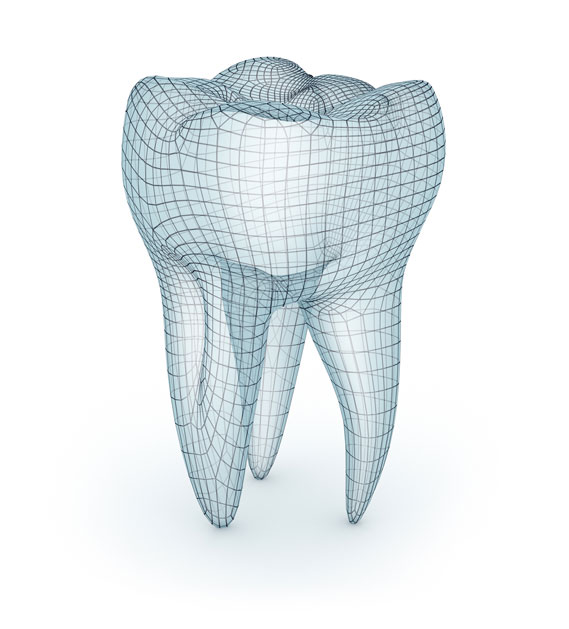We look forward to welcoming you back!
Following are some of the procedures that periodontists perform to treat patients diagnosed with a periodontal (gum) disease. A periodontist is a dentist who specializes in the prevention, diagnosis and treatment of periodontal disease. Periodontists receive extensive training in these areas, including three additional years of education beyond dental school. Periodontists are familiar with the latest techniques for diagnosing and treating periodontal disease. In addition, they can perform cosmetic periodontal procedures to help you achieve the smile you desire.
The American Academy of Periodontology treatment guidelines stress that periodontal health should be achieved in the least invasive and most cost-effective manner. This is often accomplished through non-surgical periodontal treatment, including scaling and root planing (a careful cleaning of the root surfaces to remove plaque and calculus [tartar] from deep periodontal pockets and to smooth the tooth root to remove bacterial toxins), followed by adjunctive therapy such as local delivery of antimicrobials and host modulation therapy. Adjunctive therapy is prescribed on a case-by-case basis.
Most periodontists would agree that after scaling and root planing alone, many patients do not require any further active treatment, including surgical therapy. However, the majority of patients will require ongoing maintenance therapy to sustain periodontal health. Non-surgical therapy does have its limitations, however. In cases where non surgical therapy alone does not achieve periodontal health, surgery may be indicated to restore periodontal health. This is achieved via a pocket reduction procedure, as described below.

Your bone and gum tissue should fit snugly around your teeth like a turtleneck around your neck. The gum and bone are "attached" to your teeth, forming a tight seal so that bacteria cannot enter beneath the gums. When you have periodontal disease, this supporting tissue and bone is destroyed and "detaches" from your teeth, forming "pockets" which allows bacteria to enter and migrate deeper and deeper under the gums, creating a periodontal infection.
As these pockets become deeper, they are creating a larger space for bacteria to live. These deep pockets collect more and more bacteria, resulting in further bone and tissue loss. Eventually, if too much bone is lost, the teeth will become loose and will need to be extracted.
After non surgical therapy has been completed, your periodontist will re-measure the depth of your pockets. A pocket reduction procedure may be recommended if you have remaining pockets that are too deep to clean or maintain non-surgically.
During the pocket reduction procedure, your periodontist folds back the gum tissue and removes the disease-causing bacteria plaque and tartar from the root surfaces of the teeth. Once the teeth and roots are clean, he/she will secure the tissue back into place. In some cases, irregular surfaces and sharp edges of the damaged bone are smoothed to limit areas where disease-causing bacteria can hide. It also allows the gum tissue to reattach better to healthy bone.
Reducing pocket depth and eliminating existing bacteria are important in order to prevent damage that can be caused by the progression of periodontal disease, and to help you maintain a healthy smile.
Deeper pockets are more difficult for you and your dental care professional to clean, so it's important for you to reduce the depth of these pockets. Reduced pocket depths and a combination of daily oral hygiene and professional maintenance care can increase your chances of keeping your natural teeth – and decrease the chance of serious health problems associated with periodontal disease.
REGENERATIVE PROCEDURES (BONE GRAFT)
In addition to the pocket reduction procedure, your periodontist may also recommend a regenerative procedure that is done at the same time as the pocket reduction procedure.
When the bone supporting your teeth has been destroyed and lost, it often leaves "craters" or large bone defects within the bone. A regenerative procedure can help reverse some of this damage by regenerating (grow back) some of the lost bone and tissue.
During this procedure, your periodontist folds back the gum tissue and removes the disease-causing bacteria. Collagen membranes (filters), bone grafts or tissue-stimulating proteins can be used to encourage your body's natural ability to regenerate bone and tissue. Particles of bone grafts are placed into the bony craters/ defects in order to "fill" the defect back to its original form.
Eliminating existing bacteria and regenerating bone and tissue helps to reduce pocket depth and repair damage caused by the progression of periodontal disease. With a combination of daily oral hygiene and professional maintenance care, you'll increase the chances of keeping your natural teeth – and decrease the chances of serious health problems associated with periodontal disease.
Periodontal procedures are sometimes necessary in order to lay the groundwork for restorative and cosmetic dentistry and/or to improve the esthetics of your gum line.
For example, if your teeth appears short and much of your gum is exposed when you smile, this "gummy smile" can be corrected with a periodontal crown lengthening procedure. Sometime, your teeth may actually have the proper lengths, but they're covered with too much gum tissue. To correct this, your periodontist can perform a crown lengthening procedure to expose more of your natural tooth.
During this procedure, excess gum and bone tissue is reshaped to expose more of the natural tooth. This can be done to just one tooth, to even your gum line, or to several teeth to expose a natural, broader smile.
Your dentist or periodontist may also recommend crown lengthening to make a restorative or cosmetic dental procedure possible. Perhaps your tooth is decayed, broken below the gum line, or has insufficient tooth structure for a restoration, such as a crown or bridge. Crown lengthening adjusts the gum and bone level to expose more of the tooth so it can be restored.
Whether you have crown lengthening to improve function or esthetics, patients often receive the benefits of both: a beautiful new smile and improved periodontal health – your keys to smiling, eating and speaking with comfort and confidence.

SOFT TISSUE GRAFTS
Soft tissue grafts are procedures a periodontist can perform to treat receeded gums, or to correct deformites of the gumline caused by a lack of "thick" gums around the teeth.
Exposed tooth roots are the result of gum recession. Perhaps you wish to enhance your smile by covering one or more of these roots that make your teeth appear too long. Or, maybe you're not bothered by the appearance of these areas, but you cringe because the exposed roots are sensitive to hot or cold foods and liquids. Also, exposed root surfaces are more prone to getting cavities.
Your gums may have receded for a variety of reasons, including aggressive tooth brushing or periodontal disease. You may not be in control of what caused the recession, but prior to treatment your periodontist can help you identify the factors contributing to the problem. Once these contributing factors are controlled, a soft tissue graft (gum graft) is done to cover the exposed root. In addition, the gum graft will "thicken" the gum in order to provide more protection against further gum recession.
During this procedure, your periodontist will take a small piece of gum tissue from your palate (the roof of the mouth) or another donor source. This piece of tissue is then tranferred to the recessed gum area in oder to attempt to cover the exposed root. This can be done for one tooth or several teeth.
